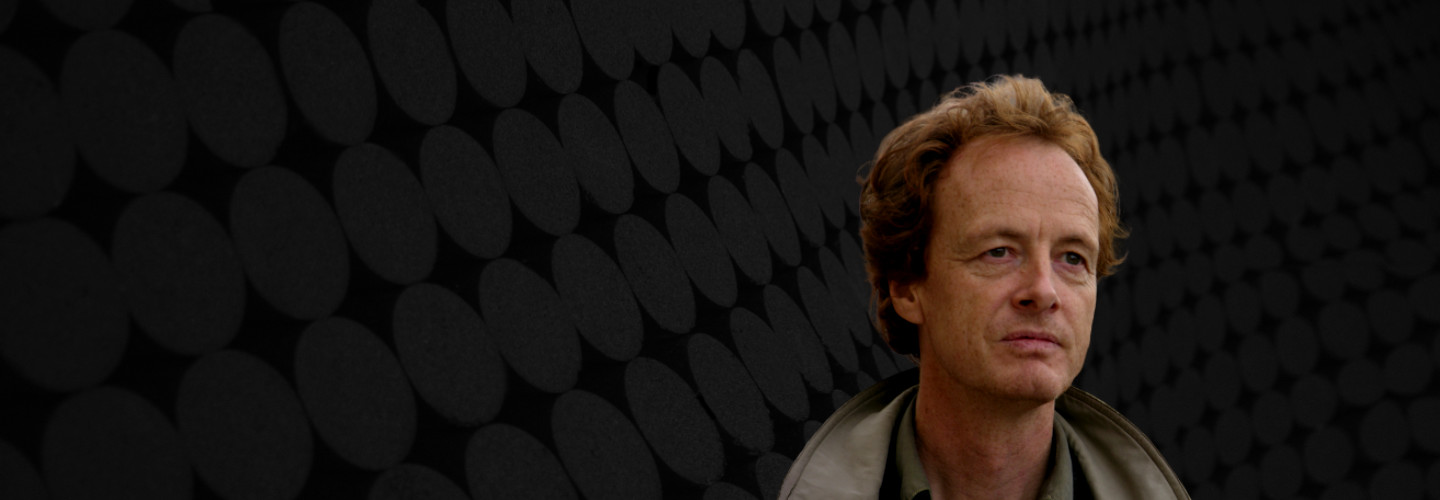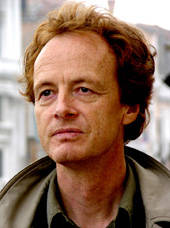

Beat Furrer
Nuun
Short instrumentation: 2 1 3 1 - 2 2 2 0 - perc(3), sax, vln(2), vla(2), vc(2), cb(2)
Duration: 18'
Solos:
2 pianos
Instrumentation details:
1st flute
2nd flute (+picc)
oboe
1st clarinet in Bb
2nd clarinet in Bb
bass clarinet in Bb
soprano saxophone in Bb (+t.sax(Bb))
bassoon (+cbsn)
1st horn in F
2nd horn in F
1st trumpet in C
2nd trumpet in C
1st trombone
2nd trombone
1st percussion
2nd percussion
3rd percussion
1st violin
2nd violin
1st viola
2nd viola
1st violoncello
2nd violoncello
1st contrabass
2nd contrabass
Furrer - Nuun for 2 pianos and ensemble
Printed/Digital
Translation, reprints and more

Beat Furrer
Furrer: NuunOrchestration: für 2 Klaviere und Ensemble
Type: Studienpartitur (Sonderanfertigung)

Beat Furrer
Furrer: Nuun for 2 Pianos, OrchestraOrchestration: for 2 Pianos, Orchestra
Type: Partitur
Sample pages
Audio preview
Work introduction
Just as the mythical goddess "NU" (compare Robert Graves, "The White Goddess") was able to stop time still, in nuun the apparently overwhelming impetus of flowing sounds is slowly brought to a stop; purely mechanical energy is transformed into living energy. In Beat Furrer's work for two pianos and orchestra, the central principle is transformation, specifically on the rhythmic, harmonic and tonal planes, as a continuous process from the beginning to the end. nuun is an almost unparalleled example of Furrer's breadth of expression. The work goes from a thoroughly concise beginning to the final, lonely sound of the piano that eventually fades away into silence. Elements are slowly filtered out of the initial complexity, layers dissolve, making structures evident that were originally embedded in repetitive models as part of an overall sound. The composer's intention was to "make evident the energy of movements and powers which form the substance of the music and go beyond it ." Beat Furrer compares this musical intention of the work to the "fine differentiations in colours that one recognizes as a result of observing a monochrome painting for a long time." There is no need to add the notice: "shadowlike" (schattenhaft), on one of the last pages of the score to understand the parallels to Feldman's favourite analogies. The shadowy sound of Beat Furrer's composition is even related to the gentle graduality of a Morton Feldman composition in its radically different conception. The relationship even goes as far as the notation: nuun starts with a tiny rest for all of the instruments - a finesse taken from Feldman's metaphysics.
The beginning of nuun is characterized by tightly-woven repetitions. Each of the pianos plays the same chord at varying times: a "B" spread over several octaves, so that the combination of two voices creates a continuous plane of repetitions. Individual tones then drop out of this plane until the rhythmic mechanics slow down and eventually stop at the end of the piece. With this kind of filtration, demechanization, the rhythm arrives at that narrow area which creates the effect of spoken language: a Parlando rises and slowly revives a layer of regular streams of beats. While at first setting parallel waves of a variety of clear rhythmical layers to create a complex, solid sound, in the second half, all of the instruments join in a common rhythm which becomes increasingly like speech: from the mechanical disparity arises a heterogeneous communion.
According to the same principle, the harmony is transformed during the course of the work. Similar to the temporal proportions, the tonal relationships are altered step by step. Furrer's point of departure for the pitch organisation in nuun was the idea of currents of movement: imaginary glissandi lead the notes of the initial chord at differing speeds toward the goal chord. With the many "stopping points" of these glissandi as the basis of the tonal material for climbing chains of chords, in which the proportions are moved around more and more. These chord progressions, which stand in the compositional background of the work, appear only seldom in their pure form, but rather show up enriched by Fourths, Fifths and Octaves, changed by various divisions of forms into quick lines or reduced to rudiments, and yet they permeate the entire work as a recognizable tendency towards the top. The imaginary lines of movement which lie at the base of the material have the effect of a harmonic process beyond all of the gestural unity, which, together with the metamorphosis of the temporal structures, help to create the breadth of nuun.
The score also requires a metamorphosis of the work's sonorities: the spectrum of sounds in the strings ranges from full-bodied Flautato to the richly overtone-heavy Ponticello played closely on the bridge in minutely detailed steps. The pianos slip out of a mechanical Martellato into pounding noise and only arrive at quiet upward-climbing lines with a cantabile character toward the end of the work. At the beginning, the groups of instruments are emphasized with expanded registers; they always play en bloc with an almost exaggerated density of their timbre. In the second part, everything becomes more mobile, noisier. For example, the horn begins to play a pulsating airy sound which is then taken up by the trumpets, then moves on to the percussion leading to an undulation in the water gong and escalating, finally, with the last frenetic piano repetitions during a last explosion of the orchestra until the resonance finally fades away. Transformations in timbre, whose meticulous notation seems to derive from Varese's problem of a seamless transition between sounds, typify the range of tension in nuun.
In all of these broad processes, overlapping transformations and layering there are still cracks, nuun is as detailed, elaborate and rough as Beat Furrer's other earlier scores. In fact one finds more escalations, breaks, and cuts than in his earlier works. But there is also more stubbornness in his intentions than in the earlier compositions so that no detail, no surprising turn can distract him from the broad ductus of nuun. Out of all its heterogeneity, clarity is still the result.
© Bernhard Günther, 1996
